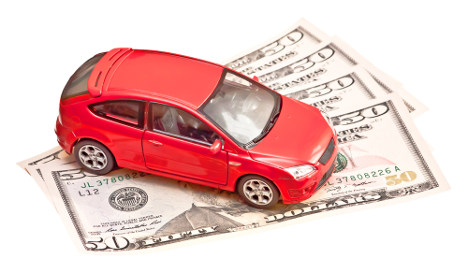ALG: Incentive spending to plateau

Look for incentive spending to level off from where it was at the end of 2016 and in the first few months of this year, says ALG chief industry analyst Eric Lyman.
The new-car market will likely “plateau” with annual sales in the neighborhood of 17.4 million this year, with the incentives — which have helped drive such high sales — likely to peak before July, ALG said in a quarterly market report.
“I think we’d feel a little more comfortable if they were lower than where they are,” Lyman said of incentives, “but we do expect them to come down over the course of the year as some of the production is right-sized, especially as it shifts toward some of the consumer demand.”
The Big 3 have been among the first to scale back production, he said in a phone interview last week.
What’s more, those cuts by domestics have been where demand is weaker (compact cars and sports cars, for instance).
“And that’s a great thing; that gives me a lot of solace that during this round of cyclicality in the market when we’re seeing sales plateau and potentially go down a bit,” he said, “that the brands that have historically had challenges limiting their production are the domestic brands, and we’ve seen them be the ones that are the first to change their production patterns.”
'Above that natural demand'
Based on the vehicle population and scrappage rates, Lyman estimates that “pure demand” on the new-car side is about 15 million, with 2016 being the “tipping point” of pent-up demand being satisfied from the sales swoon of the automotive downturn.
“I think the question now remains is, how long can we sustain a level that’s above that natural demand, and what’s it going to take to do that? Well, obviously, the way you reconcile the imbalance between supply and demand is through the use of incentives, by lowering that price to that natural demand curve that we’re seeing,” Lyman said.
“Unfortunately, the higher we are above that natural demand level, the more incentives that are going to be required, which not only puts pressure on the remarketers from a volume perspective — you’re putting more vehicles out there that are going to have to be resold, especially with lease penetration as high as it is — but you’re also pushing those incremental sales through higher incentives, which then depress the values.”
And incentives, according to a forecast from J.D. Power and LMC Automtoive released Tuesday, are still hitting records in the first four months of the year.
Automakers have spent $16.4 billion on incentives this year, that forecast said, which beats year-ago by 13 percent. They put $460 more on each vehicle than a year ago, with April's per-unit average at $3,814, according to J.D. Power.
“While industry retail sales pace remains high, it is being powered by elevated levels of incentive spending which pose a serious threat to the long-term health of the industry,” Deirdre Borrego, senior vice president of automotive data and analytics at J.D. Power, said in a news release. “The total value of incentives used to sell new vehicles has increased by $1.9 billion through the first four months of the year.”
Days-to-turn has weakened, J.D. Power said. The share of new-vehicle sales this year with turn rates above 90 days has climbed from 27 percent to 30 percent.
“With flat retail demand and inventory at record levels, manufacturers will continue to face a difficult choice between maintaining elevated incentives or making production cuts,” Borrego said.
As Lyman mentions above, the preferred route — and apparently the route some are already taking — is the latter.
Leasing a more positive incentive?
A historically healthy rate of incentives as a percent of transaction price is around 9 percent or 10 percent, Lyman said. Current rates are near 11 percent, he said.
Granted, certain types of incentives are more detrimental than others. Cash on the hood, for instance.
To their credit, Lyman believes automakers are being more “sophisticated” with the channeling of incentives. In the past five or six years, he said, more money is being spent on lease subvention, “which is less visible to the consumer,” so the residuals don’t take quite as big a hit.
“And it’s also more consistent,” Lyman said.
There’s a lot of “levers” an automaker can use, for instance, to set up a $199 per month lease payment, whereas slapping cash on the hood can lead to volatility for the industry and consumers alike.
“From a remarketing perspective, it creates a moving target on what dealers are willing to pay for the vehicle, based on what’s going on with new-car incentives,” Lyman said of cash on the hood.
It can also lead to confusion for the consumer, who is trying to “time the market” to buy when cash incentives are highest, he said.

 View The Latest Edition
View The Latest Edition

